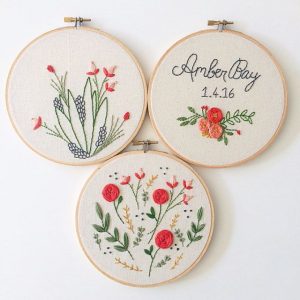Embroidery is the craft of decorating fabrics and materials using a needle with a thread or yarn. Elaborately embroidered clothing, religious objects, and household items often were seen as a mark of wealth and status.
Embroidered Goods
Embroidery was an important art in the Medieval Islamic world. The 17th-century Turkish traveler Evliya Celebi called it the “craft of the two hands”.
Because embroidery was a sign of high social status in Muslim societies, it became widely popular.
Materials
The fabrics and yarns used in traditional embroidery vary from place to place. Wool, linen, and silk have been in use for thousands of years for both fabric and yarn.
Today, embroidery thread is manufactured in cotton, rayon, and novelty yarns as well as in traditional wool, linen, and silk. Now a day, we can see it on shirts, Chudithars, Kurtas, caps, hats, coats, blankets, dresses and stockings.
Ribbon embroidery uses narrow ribbon in silk or silk/organza blend ribbon, most commonly to create floral motifs.

Classification
Embroidery can be classified according to what degree the design takes into account the nature of the base material and by the relationship of stitch placement to the fabric.
The main categories are free or surface embroidery counted embroidery, and needlepoint or canvas work
History
The process used to tailor, patch, mend and reinforce cloth fostered the development of sewing techniques, and the decorative possibilities of sewing led to the art of embroidery.
The art of embroidery has been found worldwide and several early examples have been found.
Works in China have been dated to the Warring States period (5th–3rd century BC).
Machine Embroidery
The development of machine embroidery and its mass production came about in stages during the Industrial Revolution.
The first embroidery machine was the hand embroidery machine, invented in France in 1832 by Josue Heilmann. Machine embroidery is most typically done with rayon thread, although polyester thread can also be used.
Contemporary embroidery is stitched with a computerized embroidery machine using patterns digitized with embroidery software. In the last couple of years, there has been an exponential growth in the popularity of embroidering by hand.
As a result of visual media such as Pinterest and Instagram, artists are able to share their work more extensively, which has inspired younger generations to pick up needle and threads.
Conclusion
Embroidery has been used to embellish textiles decorative and communicative processes. Used on clothing, it may reveal the wearer’s wealth, social status, ethnic identity or systems of belief.


